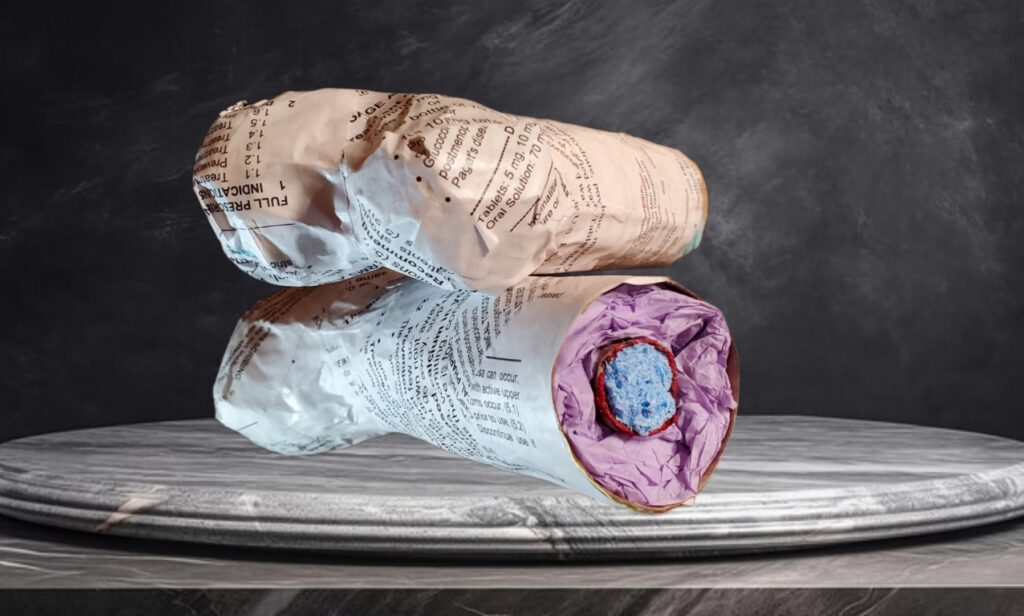Stephanie Freeman
Instructor Don Larson
Biol F111X
21 November 2023
Osteoporosis and Treatments
Osteoporosis is a disease of the bones that affects many people around the world. A journal published in 2016, by the National Institute of Health states, “With an aging population and longer life span, osteoporosis is increasingly becoming a global epidemic. Currently, it has been estimated that more than 200 million people are suffering from osteoporosis” (Sözen, Özışık, Başaran. 2016). This disease is caused by the process of bone breakdown not being able to keep up with the process of bone production. Osteoporosis affects a person’s bone density which is regulated by hormones and cells within our bodies and can include treatments involving hormone therapy, inhibition, antiresorptive and anabolic agents.
What is osteoporosis? If one was not knowledgeable about this word’s meaning, it can be derived from parts of the word. Osteo- means bone. Poro- or por- can be stemmed from pores or holes. -Osis means condition. Put all that together and one could discern that osteoporosis means the condition of having holes in bones which is quite close to its definition. According to the National Institute of Arthritis and Musculoskeletal and Skin Diseases, “Osteoporosis is a bone disease that develops when bone mineral density and bone mass decreases, or when the structure and strength of bone changes. This can lead to a decrease in bone strength that can increase the risk of fractures (broken bones)” (“Osteoporosis,” 2022).
How does this happen? In our bodies we have different cells tasked with different functions. In our bones, we have osteoclasts and osteoblasts. Osteoclasts function by breaking down bone, also known as bone resorption. Osteoblasts, alternatively, aid in building and forming bone. In healthy bone, these two cell types are in harmony, neither outperforms the other. In people with osteoporosis, osteoclasts break down bone at a faster rate than osteoblasts can keep up with. This can be caused by different factors. The parathyroid hormone can activate osteoclasts, bone breakdown cells, and usually does this when low calcium levels are detected in the blood stream. Osteoblasts, bone building cells, can be activated by sex hormones, testosterone and estrogen. Because women experience menopause, which leads to a significant decrease of estrogen (the female sex hormone), they are at more risk for developing osteoporosis, compared to men.
What are some treatments for osteoporosis? Because sex hormones, estrogen and testosterone, activate osteoblasts, which help form bone, hormone replacement therapy could be an option. “The effect of sex hormones on bone tissue was studied in 12 osteoporotic patients” and it was stated that, “Before treatment, bone resorption was greater than normal in all but one patient and bone formation was normal. After treatment, bone resorption decreased to within the normal range in all patients, and bone formation did not change significantly” (Riggs et al. 1969). This study did show promise but is not a long-term therapy as it did not show that, “bone resorption can be inhibited indefinitely” (Riggs et al. 1969).
Another treatment for osteoporosis is seen in bisphosphonates which are antiresorptive medications, which stop the breakdown of bone. These include, Bonvia (ibandronate), Actonel (risedronate), and Fosamax (alendronate). “Bisphosphonates are the most commonly used drugs for the treatment of osteoporosis. They avidly bind to bone and are internalized by osteoclasts to inhibit resorption” (Das, 2013, p. 438). More elaborately explained as these medications are, “metabolized in osteoclasts to non-hydrolysable analogs of adenosine triphosphate (ATP), accumulation of which causes osteoclast apoptosis” (Das, 2013, p. 438). This means the osteoclasts take in these medications which produce difficult to dissolve form of ATP. This will eventually cause cell death in the osteoclast.
Another combatant of osteoporosis is Prolia (denosumab). This treatment is not bisphosphonate but is still an antiresorptive. “Denosumab (Prolia), a fully human monoclonal antibody against RANKL, is an anti-resorptive drug that acts by preventing RANKL,” a receptor activator, “from interacting with RANK,” another receptor activator, “on the osteoclast precursor cells. This inhibits the differentiation and function of these cells and is associated with fracture prevention at multiple sites” (Kohli, 2011). When RANK and RANKL interact together, it signals osteoclasts to be activated or for more osteoclast to be produced. The usage of denosumab would stop this interaction from happening and therefore osteoclasts would not be activated.
While all the previous medications mentioned were all antiresorptive, Forteo (teriparatide), is a different class of medications called an anabolic agent. Anabolism is defined as, “the set of metabolic pathways that construct molecules from smaller units” (Anabolism, 2023). Normally, the parathyroid will activate osteoclasts when low levels of calcium are detected in the bloodstream. As the osteoclasts break down bone, calcium is released, allowing homeostasis to be maintained. This is a negative feedback loop. Once homeostasis is reached, osteoclasts deactivate. In contrast, the anabolic agent, teriparatide, helps rebuild bone using the parathyroid hormone. That sounds a bit paradoxical. “When under continuous exposure to PTH (e.g., hyperparathyroidism), bone undergoes resorption more than formation, while intermittent exposure to low-dose PTH (like daily administration of teriparatide) induces bone formation more than resorption” (Vall, 2023). So, the key here is to have intermittent exposure to a low dose of PTH. This helps activate the osteoblasts, instead of the osteoclast and therefore there is bone growth and formation instead of bone resorption or breakdown.
While there is one major cause of osteoporosis, there are many ways to help treat this disease. The activation or inhibition of the bone cells, osteoclasts and osteoblasts are the main corporates of why and how people lose bone density and develop brittle, fragile bones. There are medications like bisphosphonates (antiresorptives), hormone therapy, and anabolic agents that can help stop bone resorption or even aid in rebuilding bone. It is advances in medications and technologies that help people understand why diseases are occurring and develop cutting age treatment, starting at the cellular levels. Going forward, we may see a decrease in osteoporotic rates instead of a drastic increase; healthy bones may be in our near future.
References
Anabolism. (2023 May). In Wikipedia. https://en.wikipedia.org/wiki/Anabolism
Das, Crockett J. Osteoporosis – a current view of pharmacological prevention and treatment. Drug Des Devel Ther. 2013;7:435-448. https://doi.org/10.2147/DDDT.S31504
Kohli SS, Kohli VS. Role of RANKL-RANK/osteoprotegerin molecular complex in bone remodeling and its immunopathologic implications. Indian J Endocrinol Metab. 2011 Jul;15(3):175-81. doi: 10.4103/2230-8210.83401. PMID: 21897893; PMCID: PMC3156536.)
Osteoporosis. (2022 December). National Institute of Arthritis and Musculoskeletal and Skin Diseases. https://www.niams.nih.gov/health-topics/osteoporosis
Riggs, B. Lawrence, Jenifer Jowsey, Patrick J. Kelly, James D. Jones, and Frank T. Maher. “Effect of Sex Hormones on Bone in Primary Osteoporosis.” The Journal of Clinical Investigation 48, no. 6 (June 1969): 1065–72. https://doi.org/10.1172/JCI106062Links to an external site..)
Sözen T, Özışık L, Başaran NÇ. An overview and management of osteoporosis. Eur J Rheumatol. 2017 Mar;4(1):46-56. doi: 10.5152/eurjrheum.2016.048. Epub 2016 Dec 30. PMID: 28293453; PMCID: PMC5335887.
Vall H, Parmar M. Teriparatide. [Updated 2023 Jan 17]. In: StatPearls [Internet]. Treasure Island (FL): StatPearls Publishing; 2023 Jan-. Available from: https://www.ncbi.nlm.nih.gov/books/NBK559248/

Healthy bone

Osteoporotic Bone
These paper mache models of bones portray healthy bone vs. osteoporotic bone. Visually you can tell that one appears “hollower” and the outer layer, periosteum, is not as “thick” as the other. For more of an artistic and symbolic effect, the outer layer on my bones is made complete by the actual patient inserts of medications used to treat osteoporosis. The layers of the package inserts mimics the osteoblast formation of new bone, which creates stronger and more healthy bone.


Osteoporosis and Treatments
The STEAM project by Stephanie Freeman titled osteoporosis and treatments describes the condition of osteoporosis and treatments of this medical condition in our skeletal system. Freeman continues the topic, describing the definition of osteoporosis as a change in the bone mass, constantly deterioration of the capacity of strength and decreasing of bone mineral density, resulting in an increased risks for fractures or broken bones for the already fragile condition in the skeletal system of the individual, Freeman also shared valuable information from her research, giving relevant sources, using statistics to showed how osteoporosis has increased in the population in our modern day.
Stephanie Freeman explained with great details the causes of osteoporosis as an imbalance of osteoclasts and osteoblasts and how these cells breakdown bones and make new bones. these cells are controlled by hormones and calcium levels.
Her steam topic illustrates the treatments for osteoporosis described as medications and hormone therapy. The medications fall into 3 classes: antiresorptive, anabolic agents, and hormones.
Freeman was doing a magnificent job using her STEAM model to illustrate the difference of healthy bones and bones affected by osteoporosis, Freeman used an effective way to explain the process of the illness using her model, plus a digital illustration.